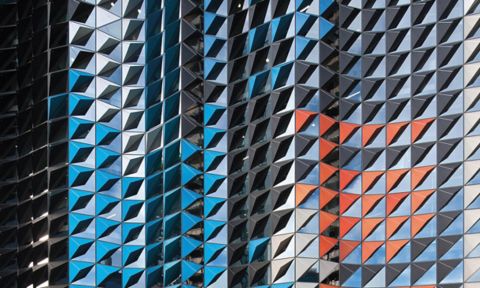The features of the REVR kit include air-conditioning, heating, steering and braking boosters, controllers and batteries but the innovation is in the motors, with the major difference in Burton’s design in shape and structure of the REVR motor.
Burton said he drew inspiration from a compulsion to address climate change and his individual impact on the planet.
“Working on projects I believe in is my biggest source of motivation,” he said. “Sustainability has been a big source of that motivation for me in my creative projects.”
“Opportunities are everywhere to improve the efficiency and footprint of how we live. Besides being a bit depressing at times, reflecting on what hasn’t been done, I think looking at what can be done is leading to some awesome innovations.”
“In this case, Internal combustion engine (ICE) vehicles are responsible for over 20% of global emissions. My own car, a 20-year-old Toyota, is perfectly functional except for its petrol engine. Retrofits retain the carbon invested in cars and do not require a new carbon debt for a new car.”
Burton said that he plans to turn his idea from a prototype into a commercial reality.
“I have partnered with my father, who has a start-up background. We are setting up a company and seeding investing opportunities,” he said.
He said that he was stoked with the demand for pre-orders and interest in the project itself, since being announced as the James Dyson award winner for this year.
“I have had a lot of messages asking for this as well as crowdfunding pre-orders, which has been really cool and motivating.”
“If a project that started as a small hobby and idea, as well as something that does some good, can become my job that would of course be the dream.”
“I do still want to get out into industry and learn as much as I can because so much exciting stuff is happening in the engineering and design scenes right now.”
RMIT runners-up round out a podium sweep
It wasn’t just a win for RMIT graduates at this year’s awards. Keagan Howell’s Linko – Masonary Construction System and Dawei Cao’s A Speculative Circular Economy Innovation were both awarded as national runners-up.
Howell’s system revolutionises masonry construction, using recycled plastic inserts to interconnect bricks and construct walls. His project offers simple assembly, reusability and diverse application adaptability, significantly reducing waste and promoting sustainability.
In his submission on the James Dyson website, Howell said Linko was inspired by witnessing the immense quantity of plastic waste and the surrounding environmental impacts in developing nations.
“Motivated by these observations, I aimed to develop a long-term, sustainable solution,” he explained.
Recognising the significant potential of plastic waste material, an opportunity emerged to repurpose discarded plastic waste by leveraging this abundant resource in the construction sector.”
“By garnering widespread industry adoption, Linko would divert and remove enormous quantities of plastic waste material & foster the development of a sustainable closed-loop circular economy, significantly improving environmental impacts.”
Meanwhile, Cao conceived a sustainable circular economy system for his small-scale coconut specialty business, LELENÜT. His mission: to transform coconut waste into customisable products.
His design showcased a process that converts food waste into 3D printing filament, complemented by a production line design capable of mass manufacturing this waste-to-material transformation.
“I started imagining a future flagship store of LELENÜT that coconut wastes can be generated into 3D filament, and then be turned into an aesthetic and customisable product,” he explained.
"I envision a future where businesses craft their unique circular economies, effectively eradicating waste while reducing their ecological footprint. I'm determined that my design journey and solution will spearhead this transformative shift in business sustainability."
About the James Dyson Award
The James Dyson Award is an international design competition and a chance for up-and-coming designers to make a name for themselves.
The competition is open annually, and aims to invoke designers to create products that simply work better, and solve problems.
As well as proving a project’s technical viability, entrants are encouraged to demonstrate its commercial viability as well.
This year, the judges also looked for entries that address sustainability issues, or have been designed, sourced and manufactured sustainably.





